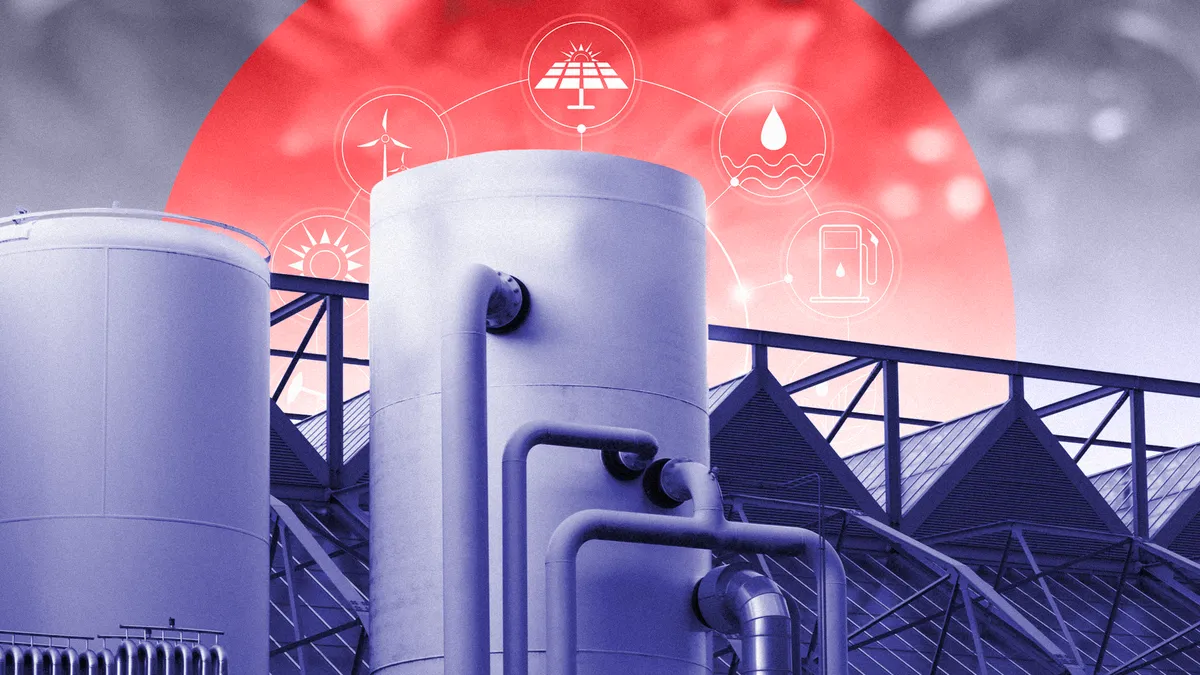Dive Brief:
- Long-duration energy storage projects, or LDES, have attracted more than $58 billion globally in private and public commitments since 2019, according to an analysis by Wood Mackenzie.
- If all commitments for projects advanced, 57 GW of LDSE would be installed, according to the research and consultancy group, or about three times the global energy storage capacity deployed this year.
- “However, most long-duration energy storage technologies are still nascent and technology developers will struggle to scale cost-effectively before 2030,” the analysis said.
Dive Insight:
Wood Mackenzie’s “Long-duration energy storage report 2022” analyzes the worldwide LDES industry, including Asia Pacific, Europe and North America.
“To accelerate the energy transition, more renewable energy sources will be used for generating power, but this in turn presents challenges for the reliability and stability of the power system,” said Kevin Shang, senior research analyst at Wood Mackenzie and lead author. “Some technology solutions exist today, but they are far from meeting society’s power needs.”
Long duration energy storage technology makes it possible for wind, solar and other renewables to match supply with demand. Fossil fuels are currently used to balance supply and demand.
The technology, capable of providing energy for eight to about 100 hours, can be a low-cost solution to enable a grid with more renewable sources, the Wood Makenzie report said. “This is why companies and governments have significantly increased their commitment to the LDES market,” it said.
Pumped hydro storage is the only LDES technology deployed on a large scale and will continue to dominate the market until 2030, the report said.
Wood Mackenzie’s analysis shows a geographical disparity in the development of the LDES market. The deployment of vanadium redox flow batteries and compressed air energy storage has accelerated rapidly in China due to strong policy support.
“In the western hemisphere, the U.S. continues to invest in and build its LDES industry, with companies actively pushing for innovation, and promoting pilot and demonstration projects,” Shang said. “In contrast, most European countries have been less enthusiastic.”
A report last month by the Long Duration Energy Storage Council and McKinsey and Co. said LDES can be deployed to store energy for prolonged periods and can store energy in various forms, including mechanical, thermal, electrochemical or chemical. LDES can contribute significantly to the cost-efficient decarbonization of the energy system, it said.
Thermal energy storage, which includes several technologies, such as medium-pressure steam, could boost potential LDES capacity globally to between 2 TW and 8 TW, from a range of 1 TW to 3 TW by 2040, according to the report. That would translate to a cumulative investment of between $1.6 trillion and $2.5 trillion.
Wood MacKenzie said that in addition to scaling up LDES technologies, companies need to establish new business models that will draw private ivestment and “explore the possibility of making a profit without subsidy support in the long run.”
Emerging LDES technologies face an “ever-growing list” of technical, financial and business barriers to gain broader deployment, reduce costs and provide financial value against combined cycle gas turbines paired with carbon capture and storage, modular nuclear reactors or green hydrogen fueled power plants.














